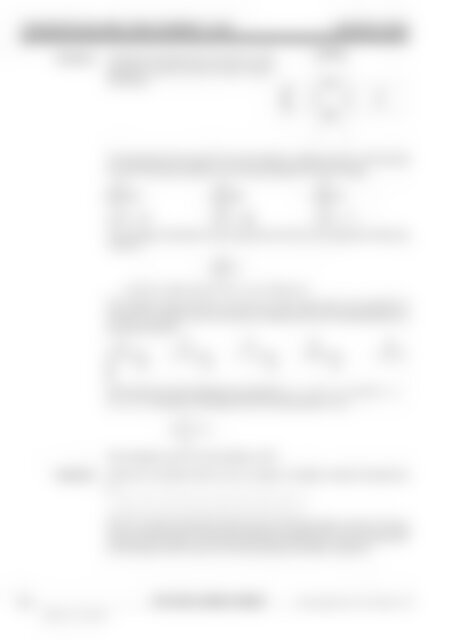RIC-0563 Developing algebraic thinking
Create successful ePaper yourself
Turn your PDF publications into a flip-book with our unique Google optimized e-Paper software.
PROBLEM-SOLVING AND NUMBER TILES<br />
Teachers notes<br />
Activity 2<br />
Use any 6 number tiles 0 to 9 to fill in the<br />
squares so that the sum of each lines is<br />
the same.<br />
Let students find solutions for the problem. Display them on the board<br />
or the overhead projector, and discuss patterns that emerge.<br />
8 4 8<br />
6 9 4 5 2 3 0 8 9 5 2 1<br />
7 6 4<br />
Sum = 24 Sum =<br />
13 Sum = 17<br />
Now assign variables to each square and look at the equations that are<br />
created.<br />
e<br />
a b c d<br />
f<br />
a + b + c + d = e + b + f or a + c + d = e + f<br />
The algebra shows that b can be any digit; each time one solution is<br />
found, four others can be found by replacing the tile represented by b<br />
as shown below.<br />
2 2 2 2 2<br />
1 0 3 4 1 5 3 4 1 7 3 4 1 8 3 4 1 9 3<br />
4 6 6 6 6<br />
6<br />
The least sum that satisfies the equation a + c + d = e + f, is 5: 0 + 1 +<br />
4 = 2 + 3. Therefore, the least sum for the problem is 10:<br />
2<br />
0 5 1 4<br />
3<br />
The greatest sum for the problem is 22.<br />
Activity 3<br />
Use all 10 number tiles 0 to 9 to create a 10-digit number divisible by<br />
3.<br />
This is a simple problem that focuses on the divisibility test for 3. Since<br />
the sum of the digits 1 to 9 is 45, and 45 is divisible by 3, any arrangement<br />
of the digits other than 0 in the first place provides a solution.<br />
6 DEVELOPING ALGEBRAIC THINKING www.ricgroup.com.au R.I.C. Publications ®<br />
ISBN 978-1-74126-088-5

















